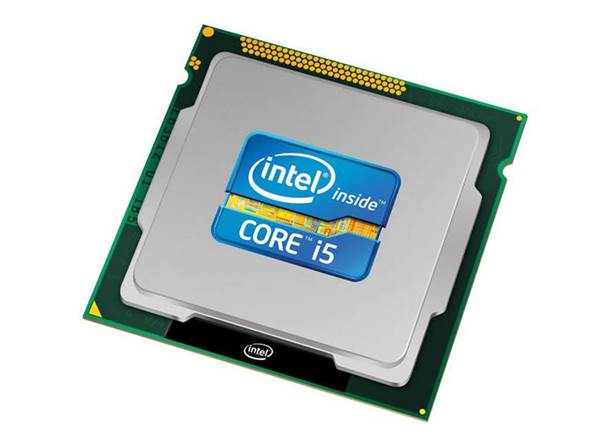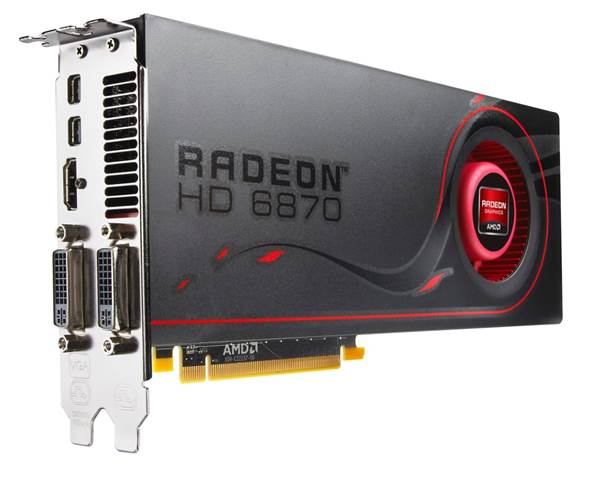Intel
Core i5-2500k

Still one of the best chips on the market
in terms of pound-for-performance, the Intel Core i5-2500k is a Sandy Bridge
quad-core which runs at 3.3GHz out of the box. At around $240, it’s far from
cheap in absolute terms, but there’s no doubt that you’re getting every drop of
performance out of that money. The Core i5-2500k has reportedly been routinely
overclocked as high as 4.4GHz without failure, so you can potentially get a 33%
improvement on its clock speed free of charge. Some have even reported
overclocking it to 5GHz with no ill effects!
The Intel Core i5-2500k is also the first
in the range to offer the Intel HD Graphics 3000 GPU, which gives better
performance than any other on-board graphics processor except its successor,
the Intel HD Graphics 4000. It won’t blow your socks off, but it will allow
casual gamers to get away without a dedicated graphics card. There’s no
question that you can get cheaper processors than this, but ultimately it’s
hard not to appreciate the bargain it represents.
RAM
There’s a school of thought that holds that
you can never have too much RAM in a system. In modern systems, that’s not
quite true, but it’s also the case that most systems would benefit from a little
more memory, and when RAM is so cheap, it’s probably the best bargain upgrade
available today.
Like CPUs and SSDs, adding more RAM to a
system can result in all-round performance enhancements that are visible across
the entire spectrum of uses for your PC. In terms of how much is enough, it’s
hard to say for certain, but there are restrictions worth paying attention to
before you cram your motherboard full of the stuff.
Perhaps the most important thing to
remember is that if you’re not running a 64-bit operating system, your PC won’t
actually recognize more than 4GB of RAM, so adding any more than that is
pointless. Secondly, you should make sure that you’re buying RAM appropriate
for the speed of your motherboard’s interface, and not paying for capabilities
you can’t use. And finally, you should remember that RAM can only speed your
computer up to a certain point.
Games, for example, don’t require as much
memory as you might think. Extra RAM capacity is primarily helpful when running
multiple large applications at the same time. Games do count as large
applications, but generally they run solo, and rarely require more than 1-2GB
of RAM at any given time. Graphics artists can reasonably expect to have to run
the likes of Photoshop, Premiere and After Effects at the same time, so in
those circumstances extra RAM could be massively beneficial, but no one’s
trying to playing Skyrim and Mass Effect 3 simultaneously on one computer.
When choosing RAM to buy, then, you can
safely cap your budget somewhere between 8-16GB without fear that you’re going
to lose out. It’s actually more important to spend your money on RAM that’s
been well-tested and rated to fast clock speeds than on buying a lot of it.
Faster gaming RAM is a little more expensive than the generic sticks destined
for bog-standard office machines, so look for this if you want to get the best
performance for your money. You don’t pay a lot extra, but it is undeniably
better.
Recommended Purchase
Corsair
Vengeance 1600MHz (2x4GB set)

Corsair Vengeance is a brand popular with
gamers looking for fast and reliable memory at prices that won’t leave them
penniless. The line is built around modules that have been specially selected
for high-performance, meaning they can take a little more punishment than bog-standard
budget memory - essential if you want to do some overclocking and get even more
speed for your money.
A pair of 4GB sticks of Corsair Vengeance
memory will set you back around $64 for 1600MHz PC3-12800 memory, so it’s no
slouch in its capabilities. The only downside is the absolutely massive heat
spreader on the standard modules -make sure you have the necessary clearance
over your slots before buying them!
Graphics
Card
The graphics card is arguably the most
specialized component in a PC, and these days, the popularity of on-board
graphics chipsets means it’s quite easy to run a computer that doesn’t even
have a dedicated graphics card. That said, no matter how fast a processor you
have, you’ll never get visuals that outperform even a half-decent graphics card
with an on-chip GPU. And if you’re a gamer, there’s no doubt that the best way
to upgrade your system is to get a graphics card.
That being the case, you might be wondering
if there’s any way to avoid blowing most of your budget on a single component.
And unfortunately, the short answer is no. It’s possible to overclock graphics
cards for better performance (assuming you can combine it with adequate cooling
improvements), but in reality, every penny spent on a graphics card is going to
directly translate to better in-game performance, so you have to spend as much
as possible.
Graphics cards can have additional costs
associated with them too, because they’re nearly unique in making a rather
significant dent in the power demands of any system. If you buy a high-end
graphics card, you’ll need to factor the cost of a new PSU into your purchase
as well. A 500W PSU should be adequate in most cases, but do check prior to
buying one how much you’ll have to spend and what the power demands of your
system are!
Compared to most components, finding a
bargain graphics card is difficult. Development is quick, and the turnover of
models means that prices fluctuate constantly. Unlike CPUs, which have a clear
brand leader, it’s less clearly defined whether you should go for AMD or NVidia
hardware. In general, NVidia cards are considered more expensive but better
made, such that they can be overclocked more readily. AMD cards, by comparison,
are generally held to be better value but hotter-running, and thus harder to
overclock.
Recommended Purchase
AMD
Radeon HD 6870 1GB

If you’re looking for a gaming bargain, the
Radeon HD 6870 is probably the best you can expect to find. Available for $159,
the fact that it’s sub-$160 and a strong performer makes it a rare beast
indeed. Try not to be put off by the fact that it’s a last-generation card; it
still runs faster than modern competitors in the same price bracket. Although
the amount of RAM looks low, it’s enough to run any game at resolutions of
1920x1080, which is the most common resolution for modern monitors.
Bear in mind that this card isn’t going to
be an especially worthwhile upgrade if you already have a dedicated graphics
card, but if you’re in the market for one and have relied on your on-board
chipset up until now, there’s no question that it’ s a bargain worth looking
at.